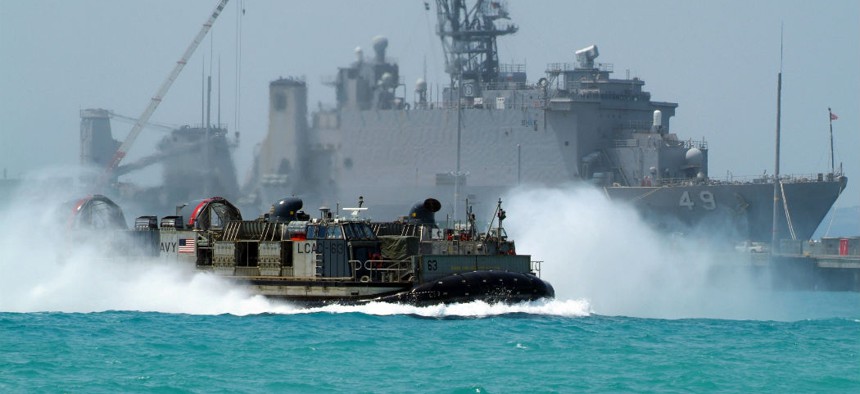Navy builds computer automation into new amphibious craft
After nearly 30 years of service, the existing fleet of the Navy’s landing craft is being updated as a new generation is being developed.
The Navy will receive its first new, upgraded amphibious ship-to-shore craft with lighter weight composite materials, increased payload capacity, modernized engines and computer automated flight controls by the end of this year, according to industry sources.
The first of the new amphibious vessels, called a Ship-to-Shore Connector (SSC) is being built by Textron Marine and Land Systems.
Designed to replace the existing fleet of Landing Craft Air Cushions that are able to move marines, weapons and supplies from ship to shore for amphibious operations, the new SSC connectors will integrate emerging computer technology that can reduce the crew size needed to operate the vessel.
“We are using digital flight controls and computer automation to replace the traditional yoke and pedals used by current connectors,” said Bill Kisah, Vice President, Textron Marine and Land Systems. As a result, on-board computers will quickly calculate relevant details, such as wind speed and navigational information, he explained.
The SSC’s new Rolls Royce engines will have more horsepower and specialized aluminum to help prevent corrosion. The lighter weight will provide a better lift capacity, allowing the craft to transport up to 74-tons--enough to transport an Abrams tank from ship to shore for an amphibious assault.
The Navy’s existing LCACs, in service since the 80s, can only transport up to 60 tons, reach speeds of 36-knots and travel ranges up to 200 nautical miles from amphibious vehicles, Navy officials said.
With some of the existing fleet of LCACs approaching 30-years of service, the Navy needs to begin replacing them with new ones, service officials explained.
LCACs can access over 70 percent of the shoreline across the world, something the new SSCs will be able to do as well, service officials said.
The Navy contracted with Textron Systems to design the SSCs and deliver up to eight new craft by 2020.
The contract has a potential value of $570 million. Textron Marine and Land Systems is now working on a detailed design deal to deliver the first boat.
In order to bridge the gap from existing LCACs to the new SSCs, the Navy implemented a special service life extension program for the current LCACs – many of which are now approaching three decades of service.
The LCACs were updated with new engines, given new rotating machinery, new command and control systems, new skirts and fixes to corrosion issues. The effort is designed to put another 10 years of life back into the LCAC, Navy officials said.
Some of the enhancements being engineered into the new SSCs are designed to address the changing threat landscape in a modern environment, a scenario that is expected to change how amphibious operations will be conducted in the future.
Since potential adversaries now have longer-range weapons, better sensors and targeting technologies and computers with faster processing speeds, amphibious forces approaching the shore may need to disperse in order to make it harder for enemy forces to target them.




